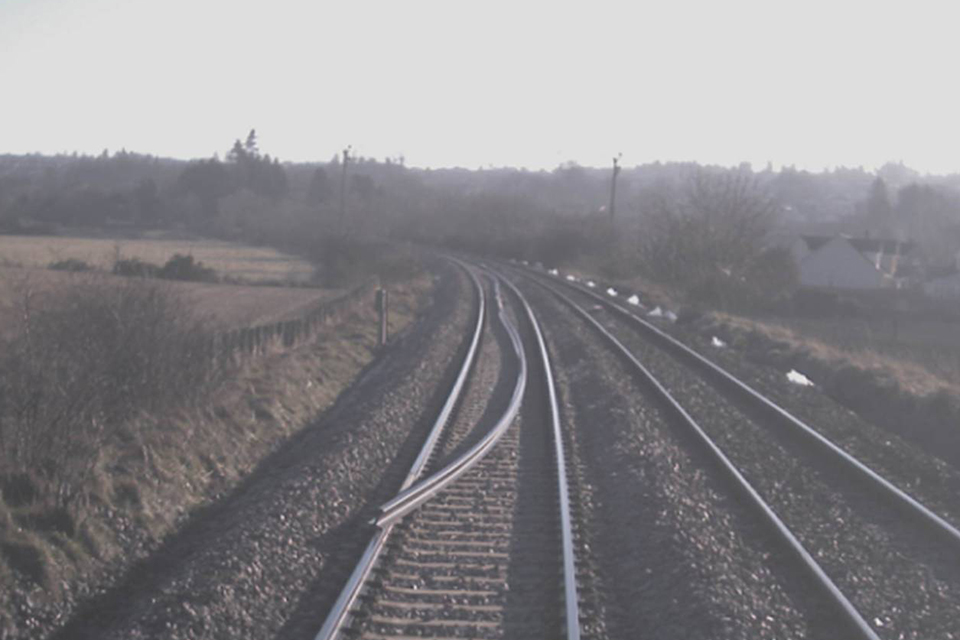Urgent Safety Advice 02/2018: Safety of the line after engineering work
Published 19 March 2018
1. Safety issue
Lines handed back for traffic in an unsafe condition following engineering possessions.
2. Safety advice
Over the last four years there have been a number of incidents in which railway lines have been returned to service in an unsafe condition following engineering works (some details of four incidents investigated by the RAIB are given below). The most recent of these occurred at Cradlehall near Inverness, on 25 February 2018. In all such cases there is a real potential for serious harm to people on subsequent train services.
In light of these incidents, and given the serious nature of the most recent incident, the RAIB advises Network Rail to take urgent steps to review the effectiveness of the steps it has already taken to address this risk, and to implement any additional measures that are required to ensure the safety of the line following engineering works.
3. Issued to:
- Network Rail
4. Background
On 26 October 2014, a passenger train was damaged when it struck an equipment cabinet door in Watford tunnel, Hertfordshire. The RAIB investigated the incident (RAIB Report 12/2015), and concluded that the door had not been properly secured following engineering work carried out in the tunnel the previous night. As a consequence the RAIB made the following recommendation:
‘Network Rail should implement a means to meet the rule book requirement for the designated person (Engineering Supervisor or Safe Work Leader) to confirm to the PICOP that the railway is safe and clear for the passage of trains when that designated person is not present on site.’
The intention of this recommendation was for Network Rail to make explicit its processes for handing back a work site so as to reduce the risk arising from the railway not being safe and clear for the passage of trains.
Network Rail has since reported to ORR that it has implemented the recommendation through the introduction in 2017 of the role of Person in Charge (PIC) in the latest version of its standard to manage risks during work on the track. The PIC is responsible for all aspects of safety during and on completion of the work, providing greater clarity about who is responsible for the safety of the task.
ORR is aware of the new risk controls within Network Rail concerning the safety of the line following maintenance work, and is currently considering the extent to which these address the RAIB’s recommendation.
On 18 June 2015, a passenger train struck a wooden sleeper on the line near Somerleyton Suffolk. The previous day, the sleeper had fallen from a trailer which had been used to collect scrap material from the lineside. In November 2015 the RAIB published a Bulletin (03/2015) about this accident, reinforcing the need for clarity on who is responsible for ensuring the safety of the line at the conclusion of engineering work, in view of the recently-made recommendation.
On 15 May 2017, an on-track machine leaving an engineering possession near Kirkham, Lancashire, encountered a large tubular steel pile obstructing the line on which it was travelling. The pile had been left on the track during engineering work earlier in the night, and was overlooked when the work site was handed back. In August 2017 the RAIB published a Safety Digest (11/2017) describing this accident, again emphasising the importance of having a formal, well briefed process for checking that a site of work is clear of materials and equipment at the end of work.
On 25 February 2018 at about 09:47hrs, a train from Inverness to London, travelling at about 53 mph (85 km/h), struck the end of a piece of rail about 130 metres (425 feet) long, which had been left on the up line at Cradlehall, a short distance south of Inverness. This was the first train to pass over the route that day.

CCTV image showing the rail on the track shortly before the train struck it (image courtesy Virgin Trains East Coast)
The train pushed the whole length of rail aside into the cess and so did not derail. The rail had been moved from the cess on the opposite side of the line during engineering work which took place the previous night. Network Rail has company standards that require that, on completion of engineering work, a nominated competent authorised person must undertake an inspection of the track to confirm that it is safe for trains to travel over at the authorised speed. It is not yet clear why this requirement was not effective on this occasion.

